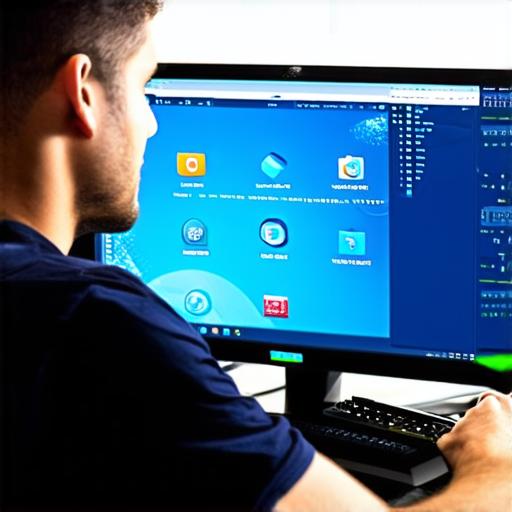As a software developer, it is important to understand the difference between application software and system software. Both types of software play crucial roles in computing systems, but they serve different purposes and have unique characteristics. In this article, we will explore what distinguishes application software from system software and provide real-life examples to illustrate the points being made.
Application Software vs System Software: An Overview
Application software refers to a type of software designed to perform specific tasks for end-users. These programs are typically installed on an individual user’s computer or mobile device and run directly by the user. Examples of application software include web browsers, word processors, spreadsheet programs, and graphic design tools.
Understanding the Differences between Application Software and System Software
To better understand the differences between application software and system software, let’s take a closer look at some of their key characteristics:
1. Purpose
Application software is designed to perform specific tasks for end-users. It is meant to be used directly by the user and typically provides a graphical interface for interacting with the program. System software, on the other hand, manages and controls the underlying hardware and operating system of a computing system. Its purpose is to provide support and services for other software applications.
2. Execution

Application software runs directly by the user and is typically installed on an individual user’s computer or mobile device. System software, however, runs in the background and is typically installed on the computer or mobile device’s hard drive.
3. Accessibility
Application software is designed to be user-friendly and accessible to end-users. It provides a graphical interface for interacting with the program and often includes features such as drag-and-drop, menus, and toolbars. System software, on the other hand, is typically more complex and requires technical expertise to install and configure.
4. Scalability
Application software is designed to be scalable and can be used by individuals or large organizations. It can be customized to meet specific needs and can be easily updated with new features and capabilities. System software, however, is typically less scalable and may require significant resources to install and configure.
5. Maintenance
Application software requires regular maintenance to ensure that it continues to function properly. This includes updating the program with new versions, fixing bugs and errors, and providing technical support for users. System software also requires regular maintenance, but the focus is on maintaining and updating the underlying hardware and operating system of the computing system.
Real-Life Examples of Application Software and System Software
To further illustrate the differences between application software and system software, let’s take a look at some real-life examples:
1. Microsoft Office – Application Software
Microsoft Office is a suite of productivity applications designed for end-users. These programs include Word, Excel, PowerPoint, Outlook, and others. They are installed on an individual user’s computer or mobile device and run directly by the user. The purpose of Microsoft Office is to provide a set of tools for creating documents, spreadsheets, presentations, and emails.
2. Windows – System Software
Windows is an operating system designed for use on personal computers and laptops. It is installed on the computer’s hard drive and runs in the background, providing support and services for other software applications. The purpose of Windows is to manage and control the underlying hardware and operating system of the computing system.
3. Adobe Photoshop – Application Software
Adobe Photoshop is a graphics editing program designed for end-users. It is installed on an individual user’s computer or mobile device and run directly by the user. The purpose of Adobe Photoshop is to provide a set of tools for creating and manipulating images.
4. Anti-Virus Software – System Software
Anti-virus software is a type of system software designed to protect the computer or mobile device from viruses, malware, and other security threats. It is installed on the computer or mobile device’s hard drive and runs in the background, scanning the system for potential threats and removing them as necessary.
